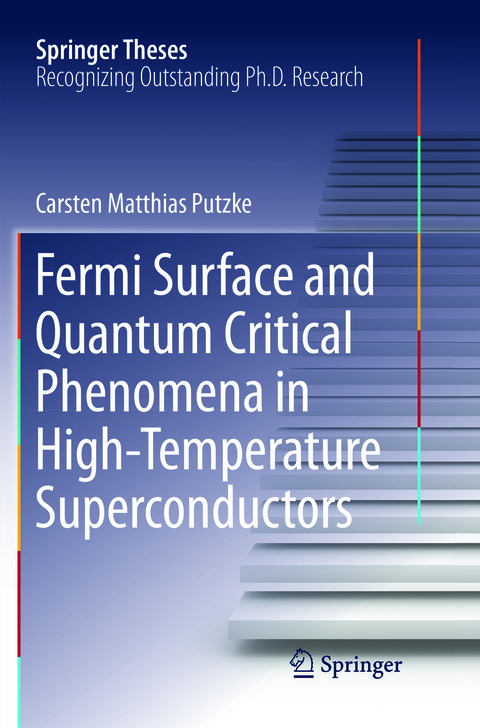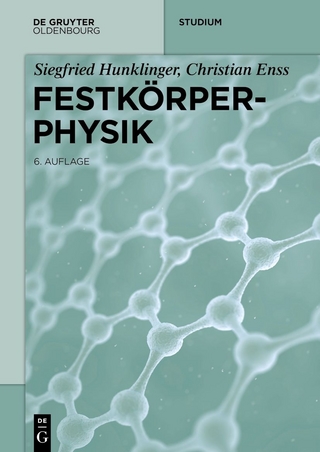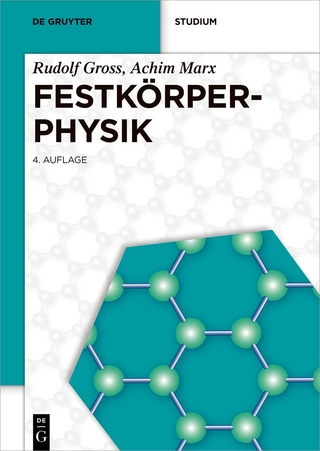
Fermi Surface and Quantum Critical Phenomena of High-Temperature Superconductors
Seiten
2018
|
1. Softcover reprint of the original 1st ed. 2017
Springer International Publishing (Verlag)
978-3-319-83984-4 (ISBN)
Springer International Publishing (Verlag)
978-3-319-83984-4 (ISBN)
This thesis provides a detailed introduction to quantum oscillation measurement and analysis and offers a connection between Fermi surface properties and superconductivity in high-temperature superconductors. It also discusses the field of iron-based superconductors and tests the models for the appearance of nodes in the superconducting gap of a 111-type pnictide using quantum oscillation measurements combined with band structure calculation.
The same measurements were carried out to determine the quasiparticle mass in BaFe2(As1-xPx)2, which is strongly enhanced at the expected quantum critical point. While the lower superconducting critical field shows evidence of quantum criticality, the upper superconducting critical field is not influenced by the quantum critical point. These findings contradict conventional theories, demonstrating the need for a theoretical treatment of quantum critical superconductors, which has not been addressed to date.
The quest to discover similar evidence in the cuprates calls for the application of extreme conditions. As such, quantum oscillation measurements were performed under high pressure in a high magnetic field, revealing a negative correlation between quasiparticle mass and superconducting critical temperature.
The same measurements were carried out to determine the quasiparticle mass in BaFe2(As1-xPx)2, which is strongly enhanced at the expected quantum critical point. While the lower superconducting critical field shows evidence of quantum criticality, the upper superconducting critical field is not influenced by the quantum critical point. These findings contradict conventional theories, demonstrating the need for a theoretical treatment of quantum critical superconductors, which has not been addressed to date.
The quest to discover similar evidence in the cuprates calls for the application of extreme conditions. As such, quantum oscillation measurements were performed under high pressure in a high magnetic field, revealing a negative correlation between quasiparticle mass and superconducting critical temperature.
Introduction to Iron Based Superconductors.- Theory.- Experimental Setup.- BaFe2(As1-xPx)2-A Quantum Critical Superconductor.- LiFeAs and LiFeP-Stoichiometric Superconductors.- YBa2Cu408.- Numerical Phase Sensitive Detection in Matlab.- Publications.- Bibliography.
| Erscheinungsdatum | 05.03.2022 |
|---|---|
| Reihe/Serie | Springer Theses |
| Zusatzinfo | XV, 162 p. 104 illus., 23 illus. in color. |
| Verlagsort | Cham |
| Sprache | englisch |
| Maße | 155 x 235 mm |
| Gewicht | 2818 g |
| Themenwelt | Naturwissenschaften ► Physik / Astronomie ► Festkörperphysik |
| Naturwissenschaften ► Physik / Astronomie ► Quantenphysik | |
| Technik ► Elektrotechnik / Energietechnik | |
| Technik ► Maschinenbau | |
| Schlagworte | Abrikosov Vortex Core States • Cuprate superconductors • de Haas-van Alphen • Fermi Surface Evolution Under Hydrostatic Pressure • Fermi Surface Measurements • High magnetic fields • High Temperature Superconductor • Iron-based superconductors • Quantum Criticality • Quantum Critical Superconductors • quantum oscillation • Quasi-particle Mass • Shubnikov-de Haas |
| ISBN-10 | 3-319-83984-5 / 3319839845 |
| ISBN-13 | 978-3-319-83984-4 / 9783319839844 |
| Zustand | Neuware |
| Haben Sie eine Frage zum Produkt? |
Mehr entdecken
aus dem Bereich
aus dem Bereich


